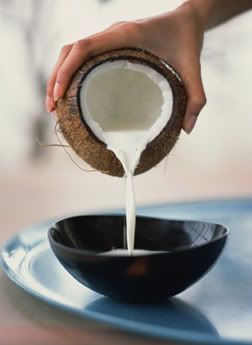1. The Gold of the Incas
Over 5,000 years ago, high in the Andes
mountains, the Incas began to cultivate quinoa (pronounced keen-wah) as
one of their staple crops, believing that it gave power and stamina to
their warriors. Quinoa was also used in their ceremonial rituals. When
Spanish conquistadors arrived in South America in the sixteenth century,
they burned and destroyed the quinoa fields as part of the effort to
annihilate Inca culture. But quinoa survived by growing wild in the
mountains or by being cultivated in secret in small quantities. In the
1980s, two North Americans stumbled upon this ancient, super-nutritious
food and began cultivating it near Boulder, Colorado. Since then,
quinoa's popularity has exploded worldwide.
Foods That Cause Joint Pain Learn about foods that cause joint pain. Get help & feel better right here. ArthritisGuidance.com
2. Getting to Know Quinoa
Although it is cooked and eaten like a
grain, quinoa is technically a seed, and is related to spinach, chard
and beets. It grows best in mountainous regions, 10 thousand feet or
more above sea level, and thrives in poor soil, thin air and extreme
weather. Quinoa stalks are 3 to 6 feet tall, and each plant can produce
up to a cup of seeds! The seeds are round, about the same size of millet
or sesame seeds, and come in a rainbow of colors, from red to purple to
green to yellow, but the quinoa that is most commonly found in stores
is an off-white color. Look for quinoa in the bulk section of natural
food stores, or in the organic section of conventional supermarkets.
3. A Complete Protein and so Much More
Quinoa is a complete protein, which means
that it contains all the amino acids necessary for our nutritional
needs. Complete proteins are rare in the plant world, making quinoa an
excellent food for vegetarians and vegans, or for anyone looking for
healthy protein source. It's also high in iron and calcium, and is a
good source of manganese, magnesium and copper, as well as fiber.
4. Cooking With Quinoa
Most commercially available quinoa has
already been cleaned, but you should still give it a thorough rinsing
before cooking to be sure to remove any remaining saponins, a soapy
resin that protects the seeds while they are growing, but can impart a
bitter taste if not removed. Combine one cup rinsed quinoa to two cups
water or broth, bring to a boil, then simmer for 10 to 15 minutes, until
the seeds become translucent and the germ of the seed uncoils to form a
little "tail." Quinoa has a light, slightly nutty taste and a fluffy
texture. It makes a tasty porridge or casserole and can be added to
soups and stews.
5. The Gluten-free Grain of Choice
Quinoa is naturally gluten-free, making
it an excellent food for celiac patients or other people following a
gluten-free diet. Quinoa flour is great for baking cookies, breads and
muffins, and quinoa flakes are a perfect substitute for oatmeal.
















 We as parents need to pay careful attention what we feed our children
and what we're filling their bodies. Don't just grab a fruit drink and
say, "Oh, that's healthy." Read the label. Up there in the corner, it
has a big starburst: "10 percent real fruit juice." What's that really
saying is 90 percent pure sugar water.
We as parents need to pay careful attention what we feed our children
and what we're filling their bodies. Don't just grab a fruit drink and
say, "Oh, that's healthy." Read the label. Up there in the corner, it
has a big starburst: "10 percent real fruit juice." What's that really
saying is 90 percent pure sugar water. They may be fine now, eating the constant sugar, white flour and
caffeine, but what a shame if later on, they develop a serious illness
because of their poor eating habits. Have you ever thought about this?
You can catch a cold, but you can't catch cancer. You don't catch heart
disease. You don't catch diabetes. These are things that are developed
over a longer period of time.
They may be fine now, eating the constant sugar, white flour and
caffeine, but what a shame if later on, they develop a serious illness
because of their poor eating habits. Have you ever thought about this?
You can catch a cold, but you can't catch cancer. You don't catch heart
disease. You don't catch diabetes. These are things that are developed
over a longer period of time. And we wonder today why some children have problems in school and why
they can't seem to concentrate. Many times, it's because of their poor
diet.
And we wonder today why some children have problems in school and why
they can't seem to concentrate. Many times, it's because of their poor
diet.